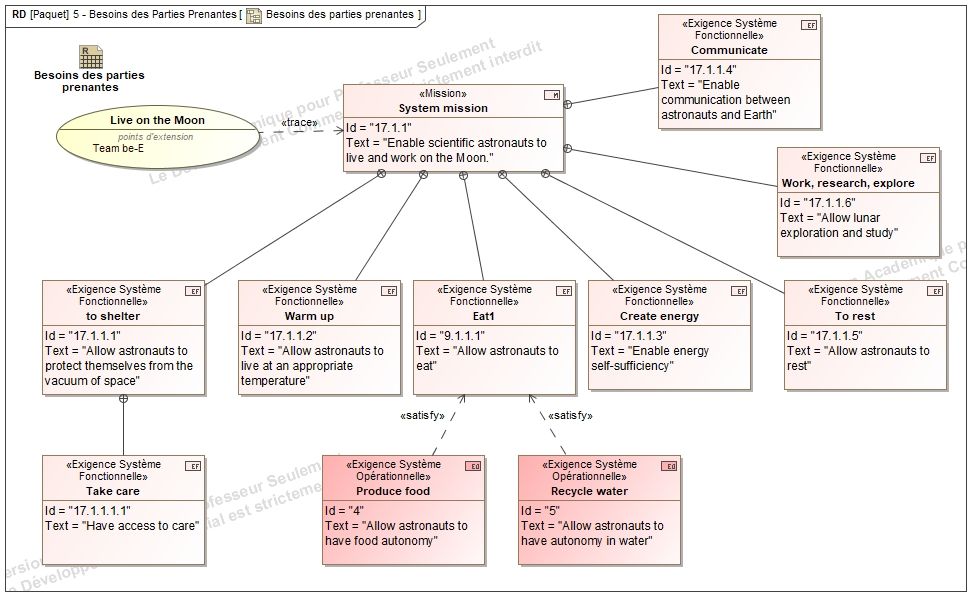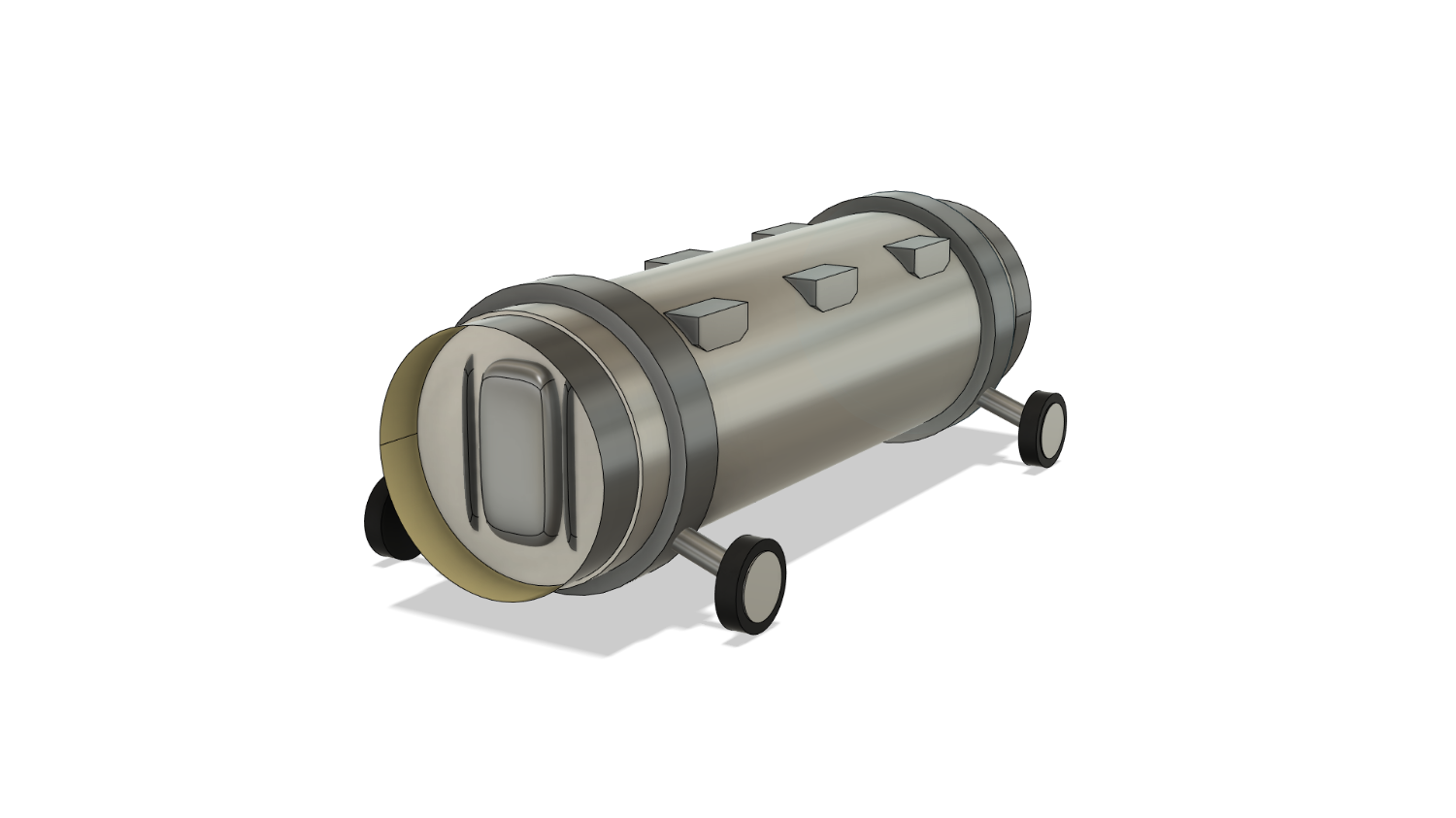Moon Camp Pioneers Gallery 2021-2022
In Moon Camp Pioneers each team’s mission is to 3D design a complete Moon Camp using Fusion 360. They also have to explain how they will use local resources, protect astronauts from the dangerous of space and describe the living and working facilities.
Team: Club Astro Lycée Lafayette
lycée général et technologique LAFAYETTE CLERMONT-FERRAND France 16, 17 7 / 0
|
Project description
We are the astronomy club of the Lafayette high school in Clermont-Ferrand. This year we are participating with our science teacher to the experiment with the blob in connection with the Alpha mission made by the French astronaut of the ESA Thomas Pesquet. We are all in a school curriculum to orient ourselves in aeronautical and aerospace engineering, or in astrophysical research. So it is with great motivation that we said yes to our teacher to participate in this contest. Before we even begin to tell you about our solutions for this challenge, we are going to present you the working technique that we used throughout this project. Our working technique consists in making a list of problems we have encountered or with a high probability of being confronted with: once this list of problems is done, we divide these “big” problems to make a lot of “smaller” ones that answer in a more specific way to our needs. It is indeed simpler to solve several small problems independently of each other to allow us to face a general constraint rather than to tackle it directly. Once all our team agreed on the technique to use, we started to create a functional specification which will allow us to be more efficient and more productive when we move on to the 3D modeling part. Our model is a view of the base during a first mission, so there is only the essential module. |
|||
|
2.1 Where do you want to build your Moon Camp?
Our base needs water to function, so the base must absolutely be located near water: on the moon we can find it in the form of ice, mainly at the poles of the moon, so our base will be located on one of the two poles of the moon. 2.2 How do you plan to build your Moon Camp? Describe the techniques, materials and your design choices.
We made the choice to make a modular base, that allows indeed to enlarge it according to the various expeditions which will be made. We know that the surface of the moon is irradiated by different radiations coming from the sun, to protect ourselves we decided to bury our base. This also has the advantage of protecting it from potential meteorite impacts. To dig the regolith we thought of using tiles with a worm inside to move and dig the regolith. The advantage is the weight which is rather low, and the fact that we can make long length by putting end to end several sections. The choice of the module was determined according to several criteria: the main one is that the module must resist to the pressure that the regolith will exert on it once the base is buried. We then found that a square module with a rounded edge was easier to build and we chose this shape. To confirm our choice we went to ask our Engineering Sciences teacher if this choice could resist the different forces to which it would be subjected. He checked and told us that it would unfortunately not be the case. So we finally chose a half-sphere module. For reasons of ease of transport this one will be composed of triangles assembled with each other. It is possible to assemble them on the ground to facilitate the assembly on site. Our different modules are connected to each other by pressurized tubes.
2.3 The environment on the Moon is very dangerous for the astronauts. Explain how your Moon Camp will protect them. (maximum 150 words)
Our camp on the moon allows us to protect the astronauts from the many dangers that surround them on this hostile surface. Indeed, we know that there is no atmosphere on the moon, and therefore no possibility of breathing. This is why our lunar base will be watertight and pressurized in conditions similar to those on Earth or the ISS. To ensure this tightness, we will use seals at each junction. We have learned from the NASA and ESA websites that lunar regolith is sharp and irritating, so to protect the astronauts, we have provided a hangar on the surface of the moon to ensure that there is no regolith in the base. If inadvertently this were the case, our filter would still ensure the safety of the astronauts. To protect our astronauts from the dangerous radiation, we have, as explained in part 2.2, decided to bury our base. |
|||
|
2.4 Explain how your Moon Camp will provide the astronauts with:
|
Water
|
Food
|
Power
|
Air
|
|
Water will be an important resource for our lunar base, in fact it will be used to hydrate the crew, for crops and above all to produce oxygen for the base via a water electrolysis system that will also produce hydrogen, which can be used as fuel to get the supply rockets off the ground. |
The base needs to provide food for the crew, however there is no real source of food on the moon, so food will have to be brought in from Earth by means of a supply rocket. However, thanks to the modularity of the base, a greenhouse module or a breeding module to raise chickens for example, can be added without any problem, which will reduce the number of supply rockets and improve the quality of life of the crew at the same time, it’s much nicer to eat fresh eggs in the morning than a tinned food. |
The base also needs to be powered, so we will use solar panels which are much more efficient than on Earth because the Moon has no atmosphere. Of course, these solar panels will have to be accompanied by accumulators to store energy during the night, but a day-night cycle on the Moon lasts 30 Earth days, so we will need more accumulators. |
There is a problem on the Moon, which is we don’t find any air on it. Cosmonaut needs air, so we don’t have any choices to import a lot of oxygen and azotes tanks from the Earth to assure humans respiration. Moreover, if we can use oxygen which is in the lunar soil, we can replace oxygen tanks by more azotes tanks, so we can efficiency use the space of Earth rocket, because the lunar soil is principally composed by oxygen (more than 40%). If we can develop the technology to take oxygen with the ground, we can use this technology to take oxygen in the CO2 which is our expiration gas. We can use electrolysis with water and take its oxygen, so we can be totally independent with this gas, and reserve rockets for other needed products, such as water or food. |
|
2.5 Explain what would be the main purpose of your Moon Camp.
The main purpose of our Moon Camp will be to do some research about the ability of humans to survive on another environment (different gravity, no air, etc). The experiment will last many years, and if it works, we can cleary said that we can live on the Moon. However, if the results are not concluding, we will take back our stuff and go back to Earth safely. The next step after our little base on the Moon is to establish colonization on this satellite, and start to make a new civilization, so its main purpose will be touristic. |
|||
|
3.1 Describe a day on the Moon for your Moon Camp astronaut crew.
The management of the day during a long term mission is essential to avoid any overwork from the team members in the station. For this reason, weekly schedules will be designed on Earth and distributed every Monday at the beginning of the week. The week will be articulated on the basis of 5 days of work (Monday to Friday) and 2 days of rest (Saturday and Sunday) and the hours will be UTC. Each day will also be well prepared and organized. It starts at 7am when the last ones will have to be awake. The astronauts will have until 8:30 am to prepare themselves and have breakfast. At 8:30 am, all the members gather in a meeting room and there the commander gives to each member the mission orders of the day that the earth will have transmitted to him and makes a general briefing. From 9 am each astronaut will be busy with what the earth has asked him to do. The astronauts are obliged to take a 1 hour break between 11am and 2pm. The working day ends at 5:30 pm with a 30 minute debriefing of the day in the meeting room. After this, the astronauts are free to do whatever they want until 11pm. At 11:00 pm the base goes into night mode and the astronauts should be in their rooms as much as possible. This planning of the day can be changed if there are any particular actions (EVA, birthday, relief, …) |
|||















